Definition and applications
The glucometer (or reflectometer) is a portable medical device capable of estimating the rate of glucose in the blood with a good approximation.

Benefits
Importance of glycemic self-monitoring
- Adjustment of hypoglycemic therapy to the glycemic values shown by the glucometer; this allows to:
- evaluate the appropriateness of the insulin scheme adopted and the efficacy over time of the self-administered insulin units (depending on the type and quantity of insulin)
- prevent episodes of hypoglycemia and hyperglycemia
- intervene in a targeted and timely manner in situations of poor diabetes control, reducing the entity and frequency of glycemic excursions
- increase safety for oneself and for others (think of the risk of suffering a severe hypo while driving or operating machinery)
- overall, to prevent or otherwise delay the onset of complications typical of diabetes
- Patient's nutrition and behavioral education
- by critically reworking the glycemic values and relating them to the diet, the level of physical activity and any diseases in progress (even transient such as typical winter ailments), the patient becomes aware of the enormous influence of these factors on glycemic levels. For example , he will notice how a correct diet and constant physical activity allow to significantly reduce the glycaemia and with it the necessary insulin doses; vice versa, the diabetic will notice how psycho-physical stress, certain foods, sedentary lifestyle and diseases can raise glycemic values requiring an increase in the insulin dose.
In a nutshell, self-measuring blood glucose can tell the diabetic if he is making the right lifestyle and medication choices, and inform him about the repercussions of such future choices.
Of course, all the advantages deriving from the correct use of the glucometer presuppose the collaboration and good will of the patient in following the medical indications to the letter.
PLEASE NOTE: glycemic self-monitoring with glucometer, while stimulating self-education and self-correction of insulin doses, CANNOT and must not replace the interaction between the diabetic specialist and the patient, a relationship that on the contrary must be strengthened by this recommended practice. For example, the patient should seek the advice of the health care team to adjust the type and doses of insulin, oral hypoglycemic agents, but also meals or snacks, when he fails to achieve the goals set for good glycemic control.
How it works and how to use it
For self-monitoring of blood glucose it is necessary to have a glucometer, a lancing device with needles and special test strips. Glucometers are usually sold in kits containing these instruments; once the test strips and needles of the lancing device have been used up, you can buy them separately keeping the original glucometer. PLEASE NOTE: Before purchasing it is necessary to check the compatibility of the test strips with the type of glucometer used, since each model requires a specific type of test paper.
To estimate blood glucose, the glucometer analyzes a small drop of capillary blood - usually taken from the fingertip - placed on a special test strip inserted inside it. In most models, the glucose contained in the blood sample will give rise to a reaction enzymatic oxidizing thanks to the presence of the glucose-oxidase enzyme in the test strip; this oxidation will give rise to a chromatic variation or to an electric current (depending on the model) which is electronically translated into the corresponding glycemic value.
Let's see in detail which procedures to follow for a correct use of the glucometer:
- wash your hands with soap and water, and dry them thoroughly
- take a test strip from the container and close it immediately
- insert the test strip into the meter and wait for the confirmation of the instrument
- gently place a drop of capillary blood on the reactive part (free end) of the strip; this drop of blood is taken through special lancing devices by making a puncture on a fingertip (always remember to wash and dry your hands, disinfecting the fingertip before making the puncture). To promote vascularization and blood flow, it is advisable to gently massage the fingertip before sampling
- Wait for the confirmation of the adequacy of the sample (which could be insufficient or excessive) by the glucometer and read the measured blood glucose value on the display
- Write down the blood glucose value in your diary and if necessary adjust the therapy as prescribed by your doctor. Many glucometers allow you to store the values of several dozen glycemic measurements in the internal memory of the device, and to transfer them to your computer via USB cable; again, some models translate these values into graphs showing for example the average daily glucose and the amplitude of daily glycemic excursions.
NOTE:
- The self-collection device and sterile lancets must NOT be shared with other people.
- Always use a new, sterile lancet and a new glucose test strip (these being disposable)
Since this is a general description, and as there are various automated devices on the market, it is recommended to respect the procedural rules suggested by the manufacturer with extreme care. The pharmacist or doctor who is treating the patient should also instruct him on the correct methods of use. , dispelling any doubts that arise.
When and how often should the measurement be taken?
In general, self-monitoring using test strips is recommended three or four times a day according to the scheme prescribed by the doctor. drug therapy undertaken.
One of the most used schemes is based on four daily glycemic determinations: in the morning on an empty stomach and two hours after each meal (breakfast, lunch and dinner). Under certain circumstances it may be useful to use the glucometer even before lunch and before dinner, perhaps taking these two additional measurements only 2-3 days a week.
Also in general, it is recommended to increase the number of glucose meter readings when:
- You practice more physical activity or less physical activity.
- You are sick or stressed
- Changes are made to routines or eating habits, eg. travelling
- The dose of insulin or medication is changed or corrected
- Symptoms of hypoglycemia are felt
- Symptoms of hyperglycemia are felt
- You suffer from night sweats or headaches in the morning
Accuracy of results
If carried out in full compliance with the rules of correct use dictated by the manufacturer, the estimate of blood sugar through test strips and portable glucometer is particularly accurate. The technological advances in recent years have in fact made it possible to significantly increase the reliability of the measurement, even in particular conditions. Among these, the hematocrit value, which when particularly low (60-65%) could - depending on the model - make it inaccurate the estimate of the concentration of glucose in the blood (indicatively over or underestimating it by 10-15%). The same goes for extremely high or extremely low glycemic values.
The operating temperature is also important: an environment that is too cold (40 ° C) could distort the glycemic values returned by the device; the same applies to the values of altitude and ambient humidity.
Finally, there can be important differences depending on the type of test strips used, even if they are produced by the same company and of the same model (possible variation from lot to lot). For this purpose, some glucometers require you to insert the code or the chip present in the package to self-calibrate based on the characteristics of the test strips used; others are able to independently detect this data. In the case of an automatic procedure (inserting the chip or automatic detection) it is however important to make sure that the glucometer displays the same code shown on the packaging of the strips. All these calibration operations must be repeated when opening and using a new pack of test strips.
For all these reasons, the reliability of the glucometer is acceptable when its use is confined to self-monitoring of blood glucose, while it is insufficient as regards the use for the diagnosis of diabetes, IFG (altered fasting glycaemia) or IGT. (impaired glucose tolerance.) In other words, the meter should only be used to test blood glucose and only with capillary whole blood samples.It cannot be used for the diagnosis of diabetes.
To improve the accuracy of the results
In addition to respecting the rules of correct use provided by the pharmacist, the doctor and the manufacturer, remember to:
- wash and dry your hands thoroughly before using the meter
- do not use test strips that have expired
- use test strips COMPATIBLE with the meter model used
- keep the test strips in a cool place, away from heat sources, light and excessive ambient humidity
- insert the strip correctly into the meter
- take a sufficient sample of blood to be placed on the strip
- clean your meter regularly
- check the condition of the batteries by replacing them immediately when they are reported as flat
- make sure the calibration code is correct
You can check the accuracy of all glucose meters with droplets of specific liquid for the device, called control solution, when you believe that the device or test strips are not working properly. They are expensive, have a short lifespan and once open, they last only a few months.
Apart from the specific accuracy of the test strips and glucometer used by the patient, it is however recommended that self-monitoring is periodically integrated with the traditional blood glucose analysis on plasma through hospital sampling; in this way it is possible to compare the data and make sure that the glucometer is working correctly (to do this, take the two measurements at the same time and state of nutrition, or better still, self-monitor the blood glucose with a glucometer and test strips immediately before or immediately after the hospital sample).
Select Blood Tests Blood Tests Uric acid - uricaemia ACTH: adrenocortitotropic hormone Alanine amino transferase, ALT, SGPT Albumin Alcoholism Alphafetoprotein Alphafetoprotein in pregnancy Aldolase Amylase Ammonemia, ammonia in the blood Androstenedione Antibody-endomysial antibodies Anti-gliadicides Nucleus Helicobacter pylori antibodies Embryo carcinoal antigen - CEA Prostate specific antigen PSA Antithrombin III Haptoglobin AST - GOT or aspartate aminotransferase Azotemia Bilirubin (physiology) Direct, indirect and total bilirubin CA 125: tumor antigen 125 CA 15-3: tumor antigen 19-9 as tumor marker Calcemia Ceruloplasmin Cystatin C CK-MB - Creatine kinase MB Cholesterolemia Cholinesterase (pseudcholinesterase) Plasma concentration Creatine kinase Creatinine Creatinine Creatinine clearance Chromogranin A D-dimer Hematocrit Blood culture Hemocrome Hemoglobin Glycated hemoglobin a Blood tests Blood tests, Down syndrome screening Ferritin Rheumatoid factor Fibrin and its degradation products Fibrinogen Leukocyte formula Alkaline phosphatase (ALP) Fructosamine and glycated hemoglobin GGT - Gamma-gt Gastrinemia GCT Glycemia Red blood cells Granulocytes HE4 and Cancer at "Ova" Immunoglobulins INR Insulinemia Lactate dehydrogenase LDH Leukocytes - white blood cells Lymphocytes Lipases Tissue damage markers MCH MCHC MCV Metanephrines MPO - Myeloperoxidase Myoglobin Monocytes MPV - average platelet volume Natremia Neutrophils Homocysteine Thyroid hormones OGTT Osmocyte Plasma protein A associated with pregnancy Peptide C Pepsin and pepsinogen PCT - platelet or platelet hematocrit PDW - distribution width of platelet volumes Platelets Plateletpenia PLT - number of platelets in blood Preparation for blood tests Prist Test Total IgEk Protein C (PC) - Protein C Activated (PCA) C Reactive Protein Rast Protein Test Specific IgE Reticulocytes Renin Reuma-Test Oxygen Saturation Sideremia BAC, BAC TBG - Thyroxine Binding Globulin Prothrombin Time Partial Thromblopastin Time (PTT) Activated Partial Thromboplastin Time (aPTT) Testosterone Testosterone: free and bioavailable fraction Thyroglobulin Thyroxine in the blood - Total T4, free T4 Transaminases High transaminases Transglutaminase Transferrin - TIBC - TIBC - UIBC - saturation of transferrin Transtyretin Triglyceridemia Triiodothyronine in the blood - Total T3, free T3 Troponin TRH and Troponins of s thymol to TRH TSH - Thyrotropin Uremia Liver values ESR VDRL and TPHA: serological tests for syphlis Volemia Conversion of bilirubin from mg / dL to µmol / L Conversion of cholesterol and triglyceridemia from mg / dL to mmol / L Conversion of creatinine from mg / dL to µmol / L Conversion of blood glucose from mg / dL to mmol / L Conversion of testosteronemia from ng / dL - nmol / L Conversion of uricemia from mg / dL to mmol / L

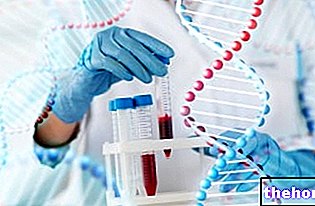
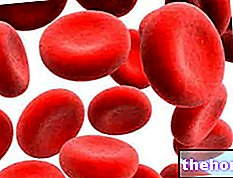
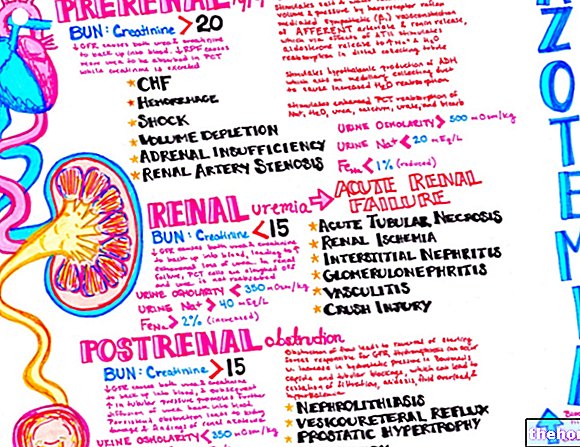

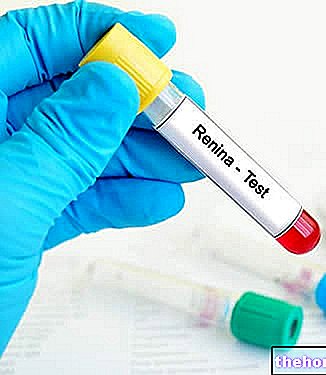
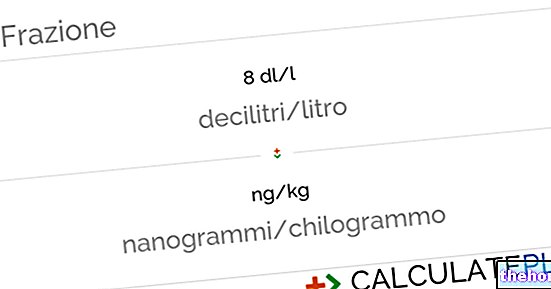









.jpg)











